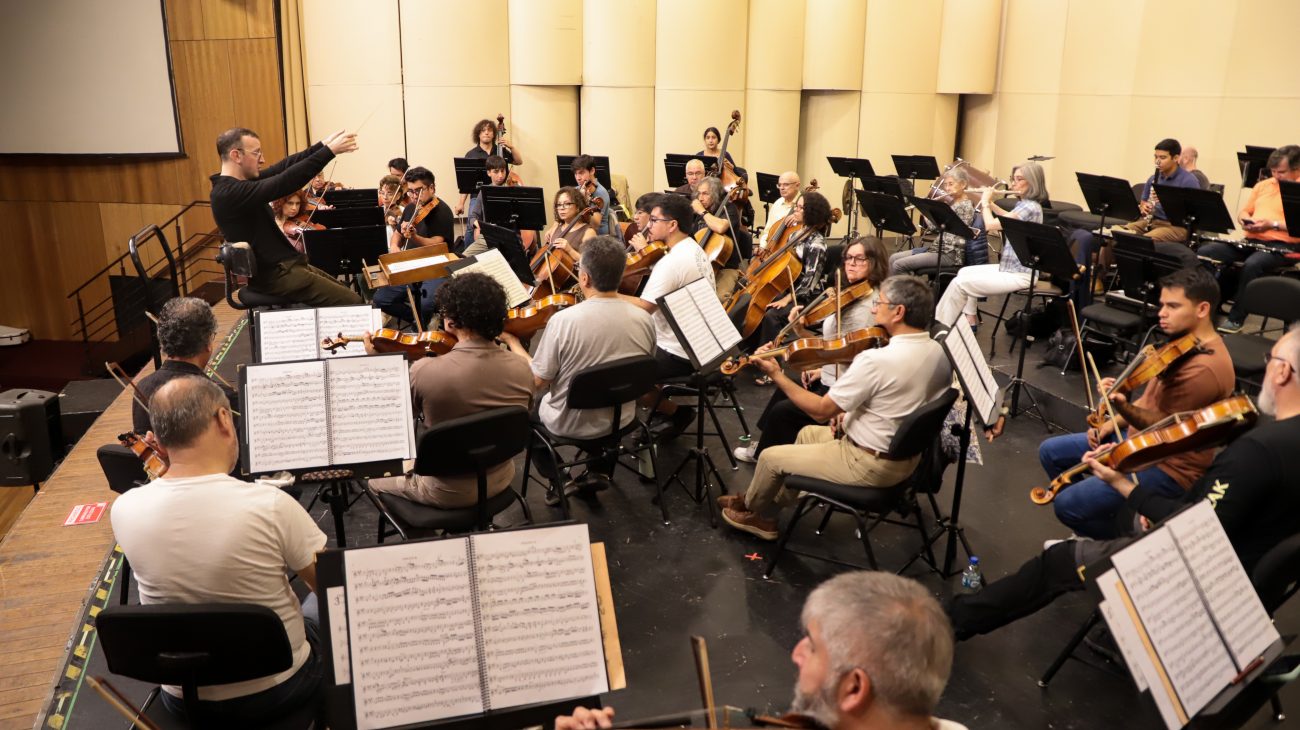Con más de 150 artistas en escena y luego de dos exitosas temporadas regresa la primera producción de gran formato del Teatro Mayor Julio Mario Santo Domingo Carmina Burana de Carl Orff, para presentarse en el Gran Teatro Nacional de Lima los días 18, 19 y 20 de julio.
Carmina Burana es el nombre de un manuscrito descubierto en la abadía benedictina de Beuern en Alemania, en 1803, y que se constituye como una de las fuentes más importantes de la música y la literatura profanas de los siglos XII y XIII. En 1936, el compositor alemán Carl Orff escogió 24 poemas de este manuscrito, de los cuales tomó solo los textos, la mayoría en latín, algunos en alemán antiguo y en provenzal para los que compuso la música formando la cantata que hoy conocemos como Carmina Burana. La obra se estrenó el 8 de junio de 1937 en Frankfurt con un espectacular montaje escénico diseñado por Ludwig Sievert.
La compañía L’Explose, el solista argentino Santiago Burgui, un equipo de tres técnicos y el vestuario viajarán a la capital peruana para poner en marcha esta vasta producción que se presentará los días 18, 19 y 20 de julio en el Gran Teatro Nacional junto a la Orquesta Sinfónica Nacional, el Coro Nacional y el Coro Nacional de Niños del Perú.
Ramiro Osorio, Director General del Teatro Mayor Julio Mario Santo Domingo de Bogotá nos habla sobre Carmina Burana, la primera gran producción del Teatro Mayor, su éxito en Bogotá y Lima, y el valor del trabajo en red.
“Carmina Burana es una de las composiciones líricas más maravillosas y reconocidas por el público de todo el mundo, Carl Orff con esta obra ha conquistado a todos los públicos en todas las regiones del mundo. Es por eso que quisimos hacerla, sabiendo que es del interés del público colombiano, y lo que quisimos fue apostar con una puesta en escena contemporánea con los mejores artistas tanto nacionales como extranjeros.
Estamos muy complacidos que una producción nuestra se esté presentando en el Gran Teatro Nacional de Lima, que es uno de los grandes escenarios que hay en América Latina. Su función de estreno fue aclamada por el público, lo que quiere decir que realmente tenemos una producción de sobresaliente calidad y ese es la marca y el sello de lo que nos hemos empeñado en el Teatro Mayor.
Para poder tener una programación de excelencia hoy, tanto nacional como internacional, es indispensable una relación muy cercana y estrecha con los grandes teatros de nuestra región. Nosotros trabajamos permanentemente con los teatros más sobresalientes y significativos de Sudamérica, como teatros de Buenos Aires, Santiago de Chile, Rio de Janeiro, São Paulo, Lima y México. Eso hace posible que nos podamos proponer entre todos la presencia de grandes orquestas, grandes artistas, grandes ballets, que por por razones de costos serían imposibles de traer a nuestros países”.
A continuación Tino Fernández, Director Escénico de esta producción, nos contó sobre la construcción y desarrollo de Carmina Burana:
¿Por qué decidieron hacer una versión de Carmina Burana, una obra tan representada en el mundo?
En realidad, el Teatro Mayor nos contactó para hacerla y le presentamos un proyecto de puesta en escena a Ramiro Osorio (Director General del Teatro Mayor Julio Mario Santo Domingo) a quién le encantó nuestra propuesta y ahí mismo se comenzaron a hacer las cosas. Quizás si viniera de nosotros mismos, hubiéramos propuesto otra obra u otro compositor. Hoy en día creo que ha sido un acierto y que nuestro planteamiento escénico es algo diferente de lo que se ha hecho hasta ahora con esta cantata.
¿Cuál fue el punto de partida para su puesta en escena?
Lo primero que hicimos con Juliana Reyes, la dramaturga de L’Explose, fue encontrar la traducción de estos cantos goliardos del siglo XII y XIII para tener una mejor comprensión de la obra. Por tratarse de una obra coral, surgió en primera instancia la necesidad de poner en escena todo el coro, de construirles a esas 70 voces una partitura coreográfica. Esos fueron los dos primeros impulsos que nos llevaron a la puesta en escena.
¿Cómo construyeron esta propuesta?
Se construyó en una primera instancia con diez bailarines de la compañía en el estudio a puerta cerrada. Luego se dio paso al trabajo con todo el coro, unos 70 coristas, más los diez bailarines, treinta y dos voces del coro infantil y tres solistas para un total de ciento quince personas en escena, más la orquesta. Fue algo majestuoso, el paso de lo micro a lo macro fue tomando tal magnitud que ni nosotros mismos nos lo esperábamos.
¿Por qué Carmina Burana es una de las obras líricas más famosas?
Yo creo que la obra nos hace un llamado al gozo de vivir, a los placeres terrenales, el amor carnal, al mismo tiempo que hace una crítica a los estamentos sociales y eclesiásticos y todo esto Carl Orff supo traducirlo muy bien a la música. En todo caso, lo que sí puedo decir es que tanto la música como todas estas voces en escena, nos hacen vibrar en cada uno de los ensayos.
¿Cómo definirían la estética de su Carmina Burana?
Creo que se podría clasificar dentro de una estética surrealista, con muy pocos elementos escénicos. Con unas cuarenta sillas, cuatro mesas metálicas y un video proyectado al fondo del escenario, se consigue adentrar al público en una atmósfera atemporal, donde el deseo está presente.
¿Qué es para ustedes lo más poderoso de la obra de Carl Orff?
Creo que lo más poderoso de Carmina Burana es la riqueza de contrastes que hay dentro de la misma obra; cómo se pasa de lo público a lo íntimo, de lo religioso a lo pagano, de lo angelical a lo terrenal, de la inocencia a la lujuria, consiguiendo sorprendernos a cada paso de la obra.





